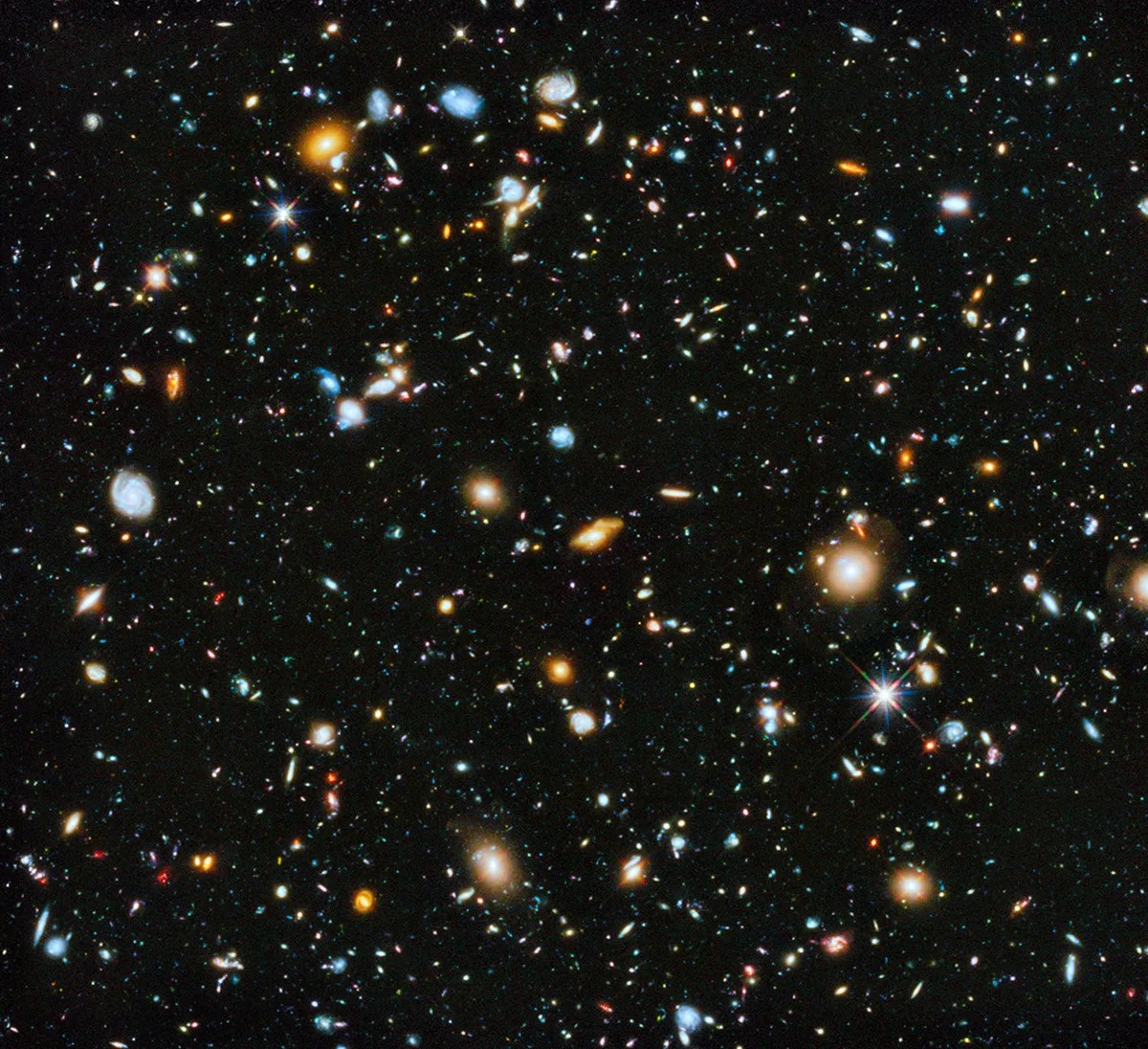Like documenting a child’s development in a scrapbook, astronomers use Hubble to capture the appearance of many developing galaxies throughout cosmic time. This is possible because of the relationship between cosmic distance and time: the deeper Hubble peers into space, the farther back it looks in time. The most distant and earliest galaxies spotted by Hubble are smaller and more irregularly shaped than today's grand spiral and elliptical galaxies. This is evidence that galaxies grew over time through mergers with other galaxies to become the giant systems we see today.
-
Hubble Ultra Deep Field
The Hubble Ultra Deep Field contains an estimated 10,000 galaxies. In ground-based images, the patch of sky in which these galaxies reside (roughly the area of sky seen through the eye of a needle held at arm’s length) is largely empty. Hubble’s deep field view uncovered a menagerie of galaxy types, shapes, sizes, and ages that help us chart how galaxies evolve over time.
NASA’S Hubble Provides First Census of Galaxies Near Cosmic Dawn
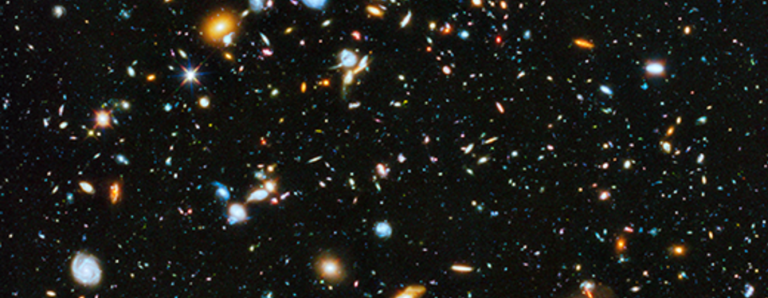 Hubble Ultra Deep Field (detail)NASA, ESA, H. Teplitz and M. Rafelski (IPAC/Caltech), A. Koekemoer (STScI), R. Windhorst (Arizona State University), and Z. Levay (STScI)
Hubble Ultra Deep Field (detail)NASA, ESA, H. Teplitz and M. Rafelski (IPAC/Caltech), A. Koekemoer (STScI), R. Windhorst (Arizona State University), and Z. Levay (STScI) -
Andromeda Galaxy and the Milky Way Collision
Hubble observations of our neighbor, the Andromeda galaxy (M31), show that the galaxy is moving ever closer to an inevitable collision with our own Milky Way. Andromeda is currently 2.5 million light-years away, but it and the Milky Way are moving toward each other under the mutual pull of gravity between the two galaxies and the invisible dark matter that surrounds them both. The merger will begin about 4 billion years from now and will likely result in the creation of a giant elliptical galaxy.
NASA’s Hubble Shows Milky Way is Destined for Head-On Collision
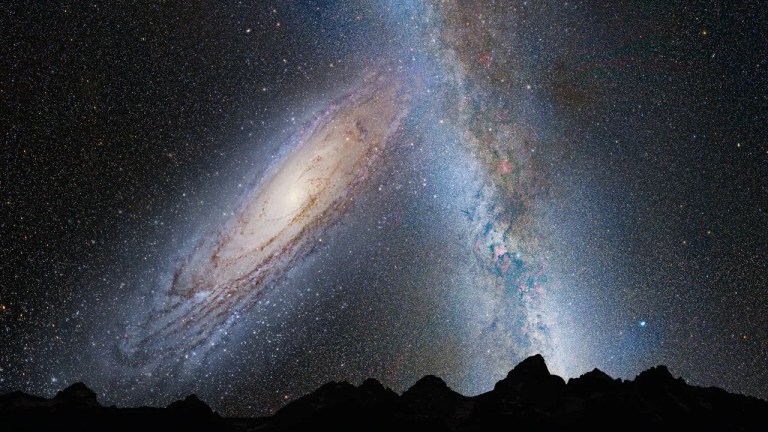 This illustration shows a stage in the predicted merger between our Milky Way galaxy and the neighboring Andromeda galaxy, as it will unfold over the next several billion years.NASA; ESA; Z. Levay and R. van der Marel, STScI; T. Hallas; and A. Mellinger
This illustration shows a stage in the predicted merger between our Milky Way galaxy and the neighboring Andromeda galaxy, as it will unfold over the next several billion years.NASA; ESA; Z. Levay and R. van der Marel, STScI; T. Hallas; and A. Mellinger
NASA, ESA, Z. Levay, R. van der Marel and G. Bacon (STScI), T. Hallas and A. Mellinger
Learn More

Hubble Shows Milky Way is Destined for Head-On Collison with Andromeda Galaxy
Hubble measurements of the motion of Andromeda show the galaxy is now 2.5 million light-years away, but it is falling toward the Milky Way under the mutual pull of gravity between the two galaxies and the invisible dark matter that surrounds them both.
Hubble Science Highlights
Discover the breadth and depth of Hubble's exciting discoveries!
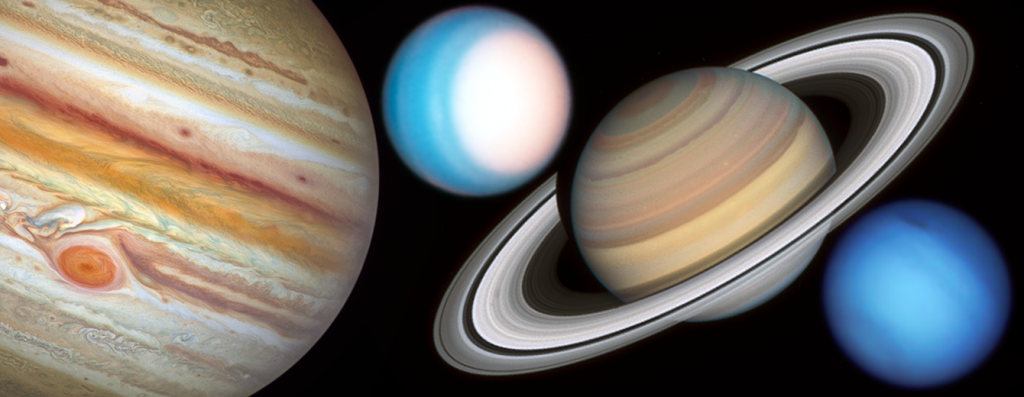
Studying the Planets and Moons
Hubble’s systematic observations chart the ever-changing environments of our solar system's planets and their moons.
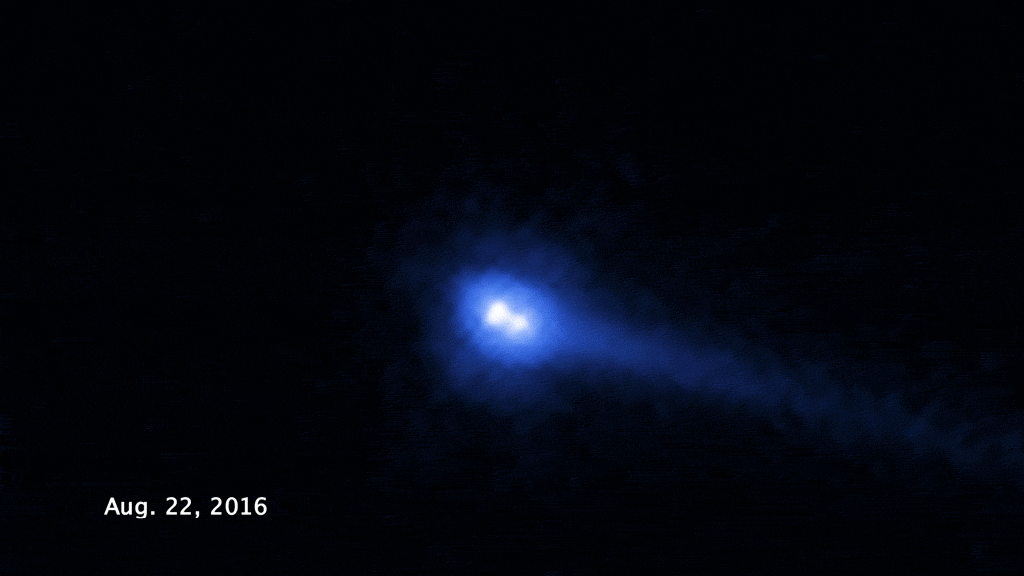
Tracking Evolution in the Asteroid Belt
These conglomerates of rock and ice may hold clues to the early solar system.
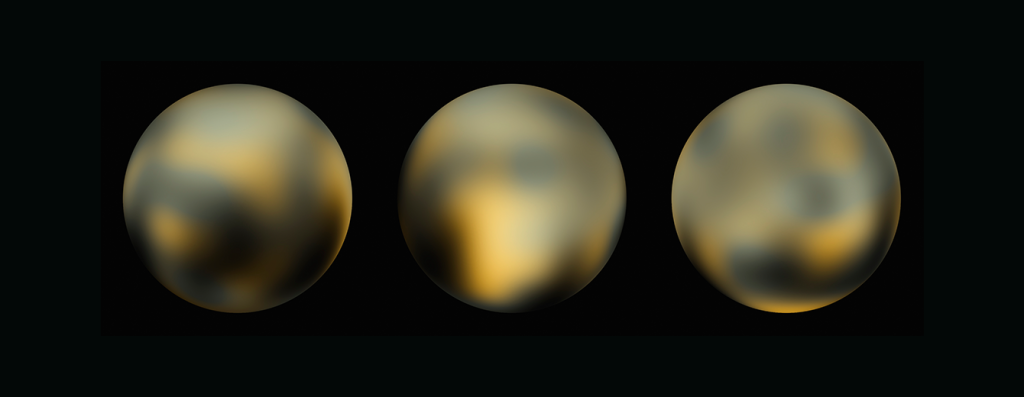
Uncovering Icy Objects in the Kuiper Belt
Hubble’s discoveries helped NASA plan the New Horizon spacecraft’s flyby of Pluto and beyond.
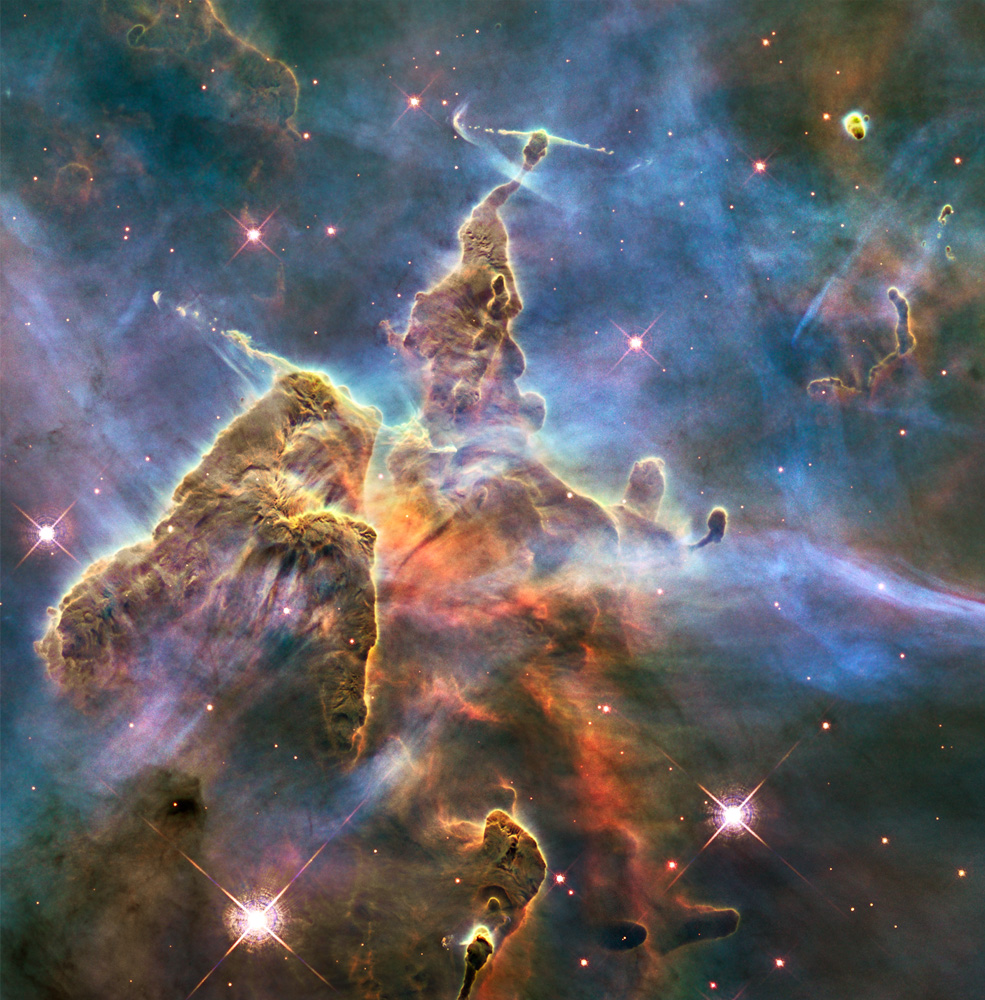
Exploring the Birth of Stars
Seeing ultraviolet, visible, and near-infrared light helps Hubble uncover the mysteries of star formation.
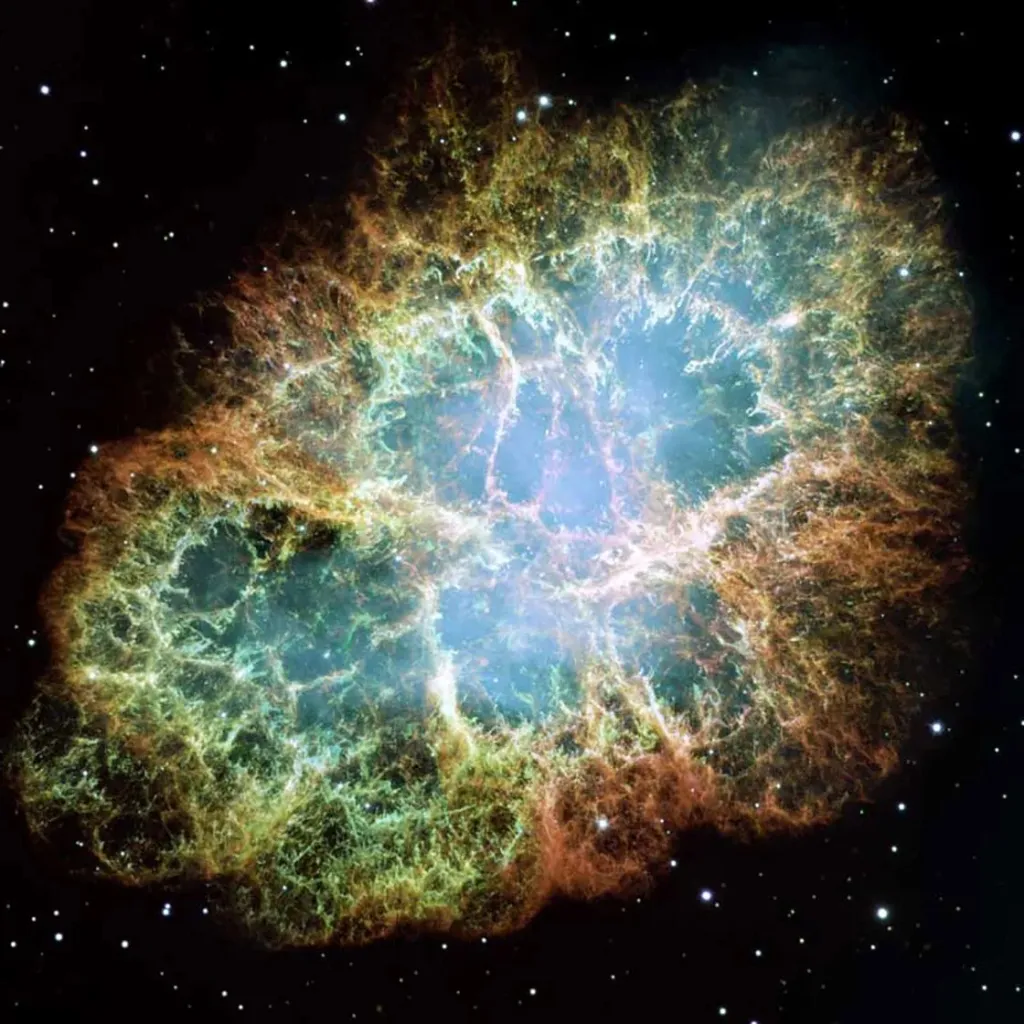
The Death Throes of Stars
When stars die, they throw off their outer layers, creating the clouds that birth new stars.
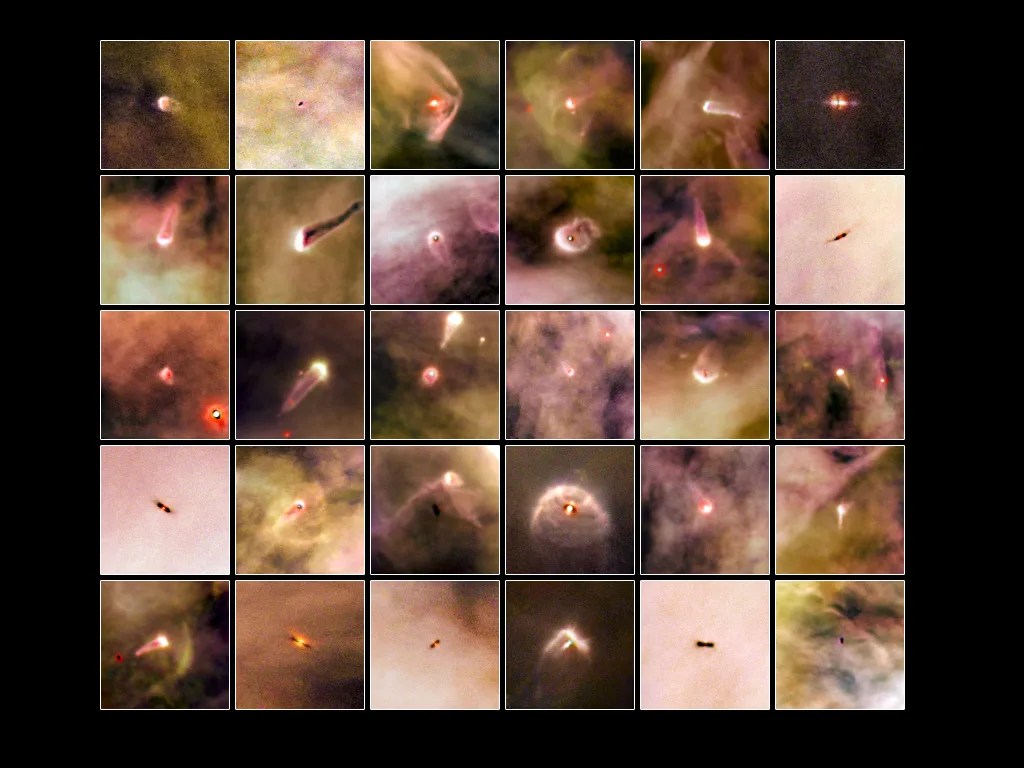
Finding Planetary Construction Zones
Hubble’s sensitivity uncovers the seeds of planets in enormous disks of gas and dust around stars.
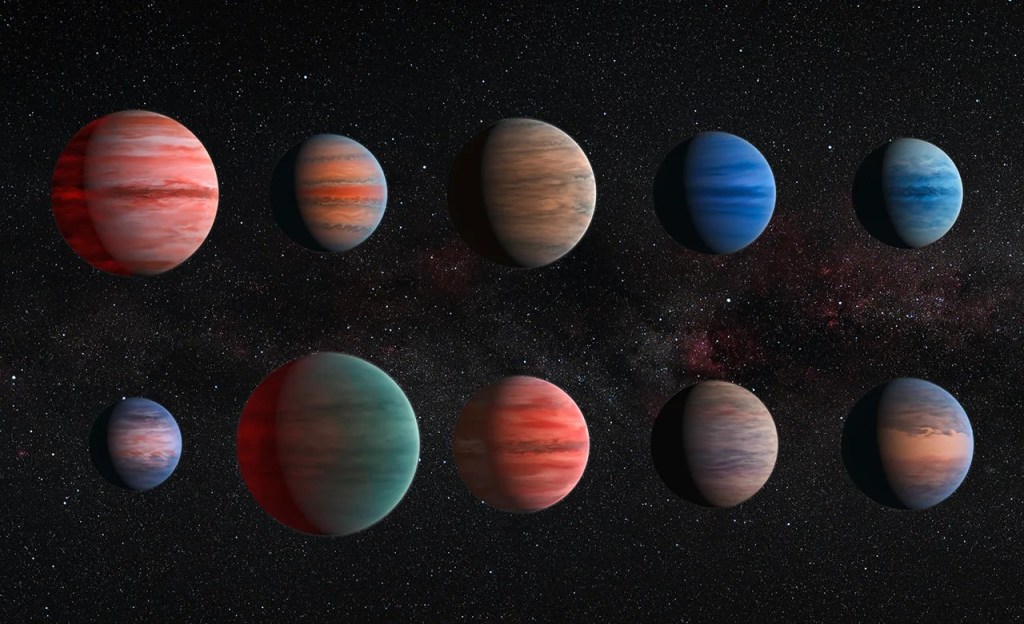
Recognizing Worlds Beyond Our Sun
Hubble can detect and measure the basic organic components for life on planets orbiting other stars.
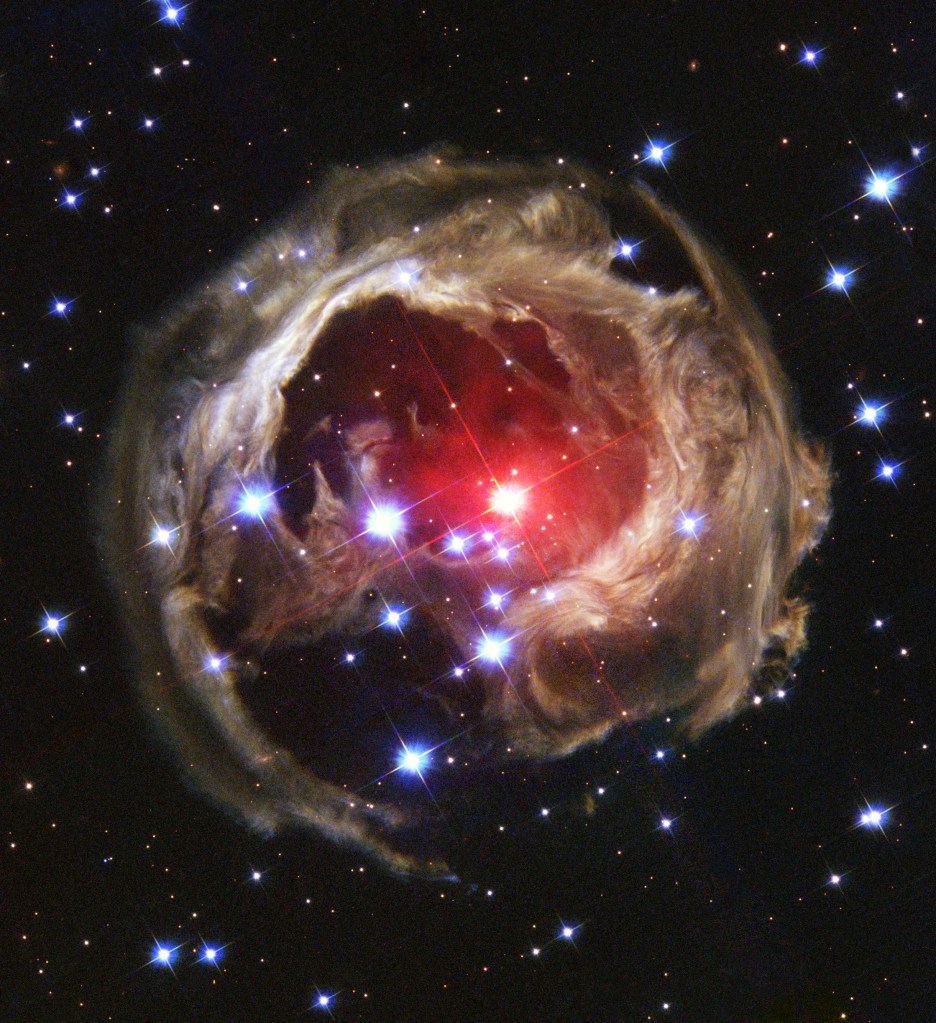
Seeing Light Echoes
Like ripples on a pond, pulses of light reverberate through cosmic clouds forming echoes of light.
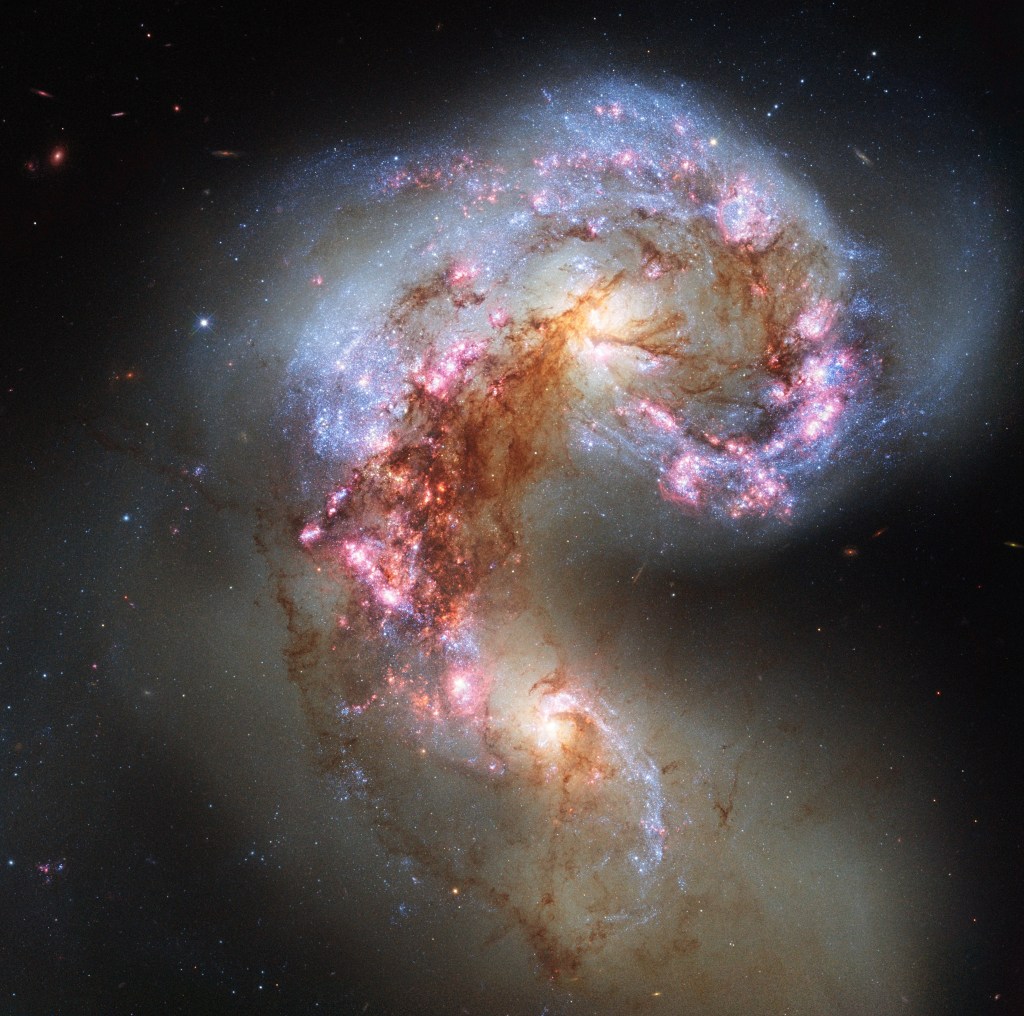
Galaxy Details and Mergers
Galaxies evolve through gravitational interaction with their neighbors, creating a menagerie of forms.
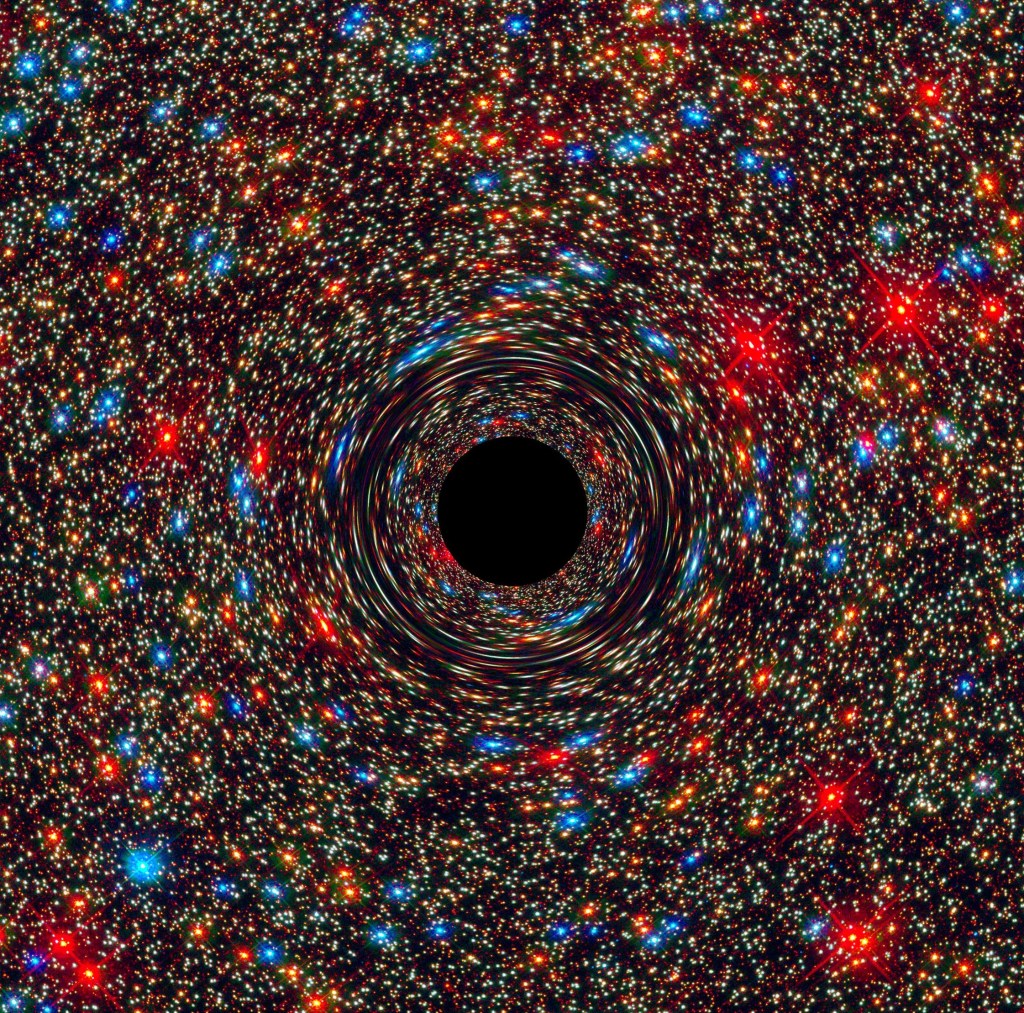
Monster Black Holes are Everywhere
Supermassive black holes lie at the heart of nearly every galaxy.
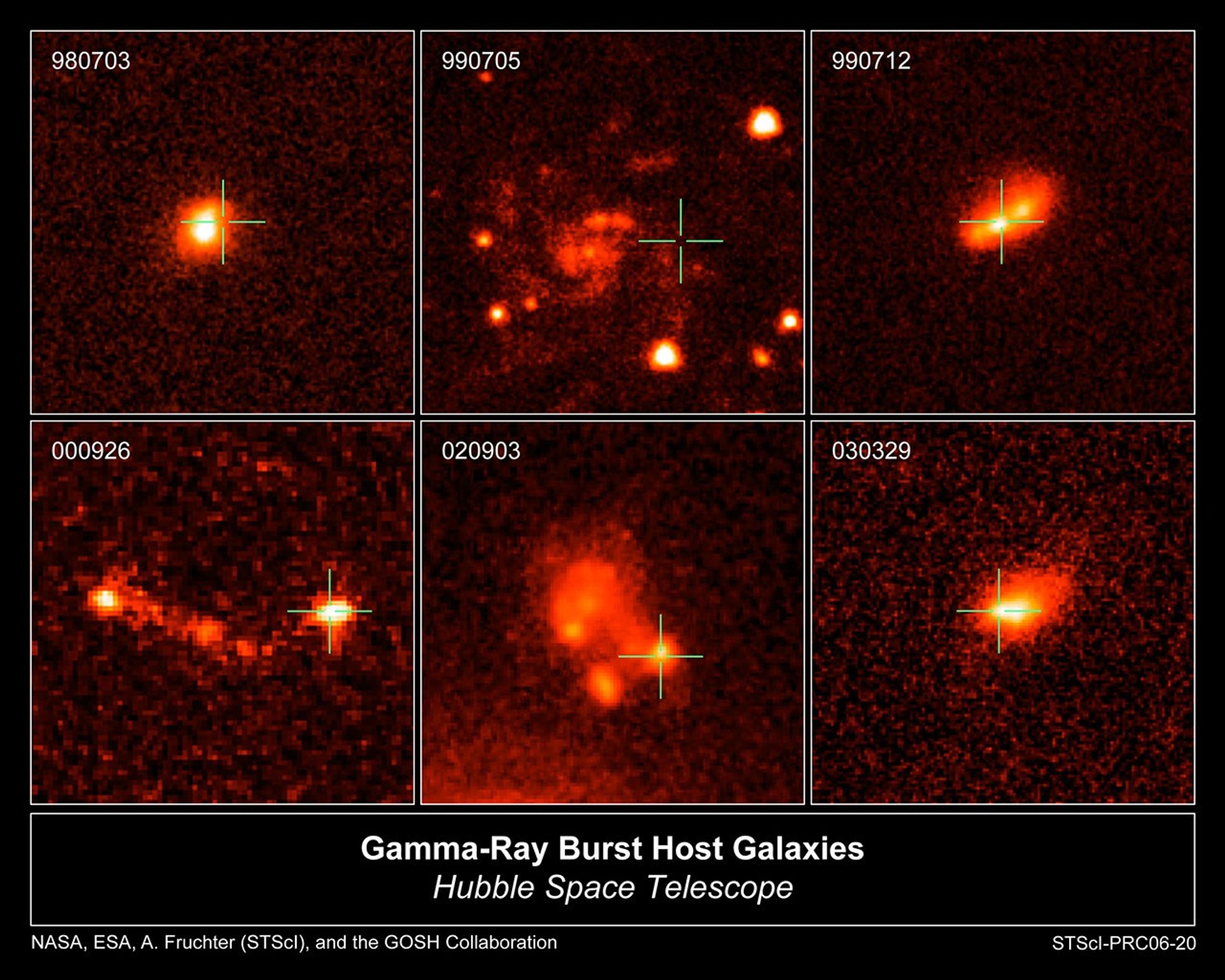
Homing in on Cosmic Explosions
Hubble helps astronomers better understand and define some of the largest explosions in the universe.
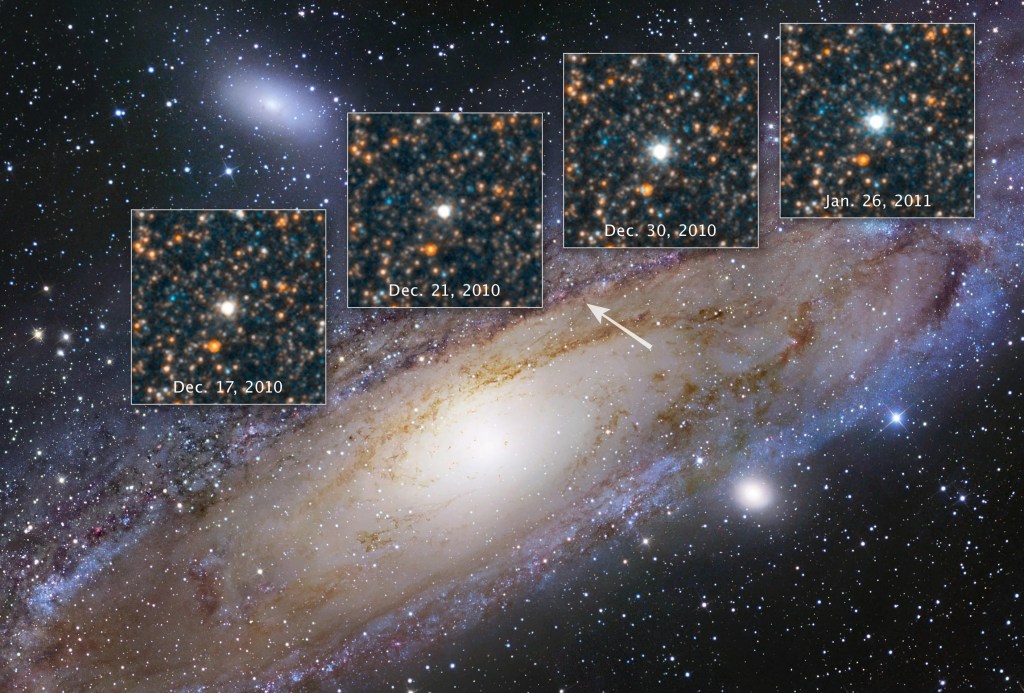
Discovering the Runaway Universe
Our cosmos is growing, and that expansion rate is accelerating.
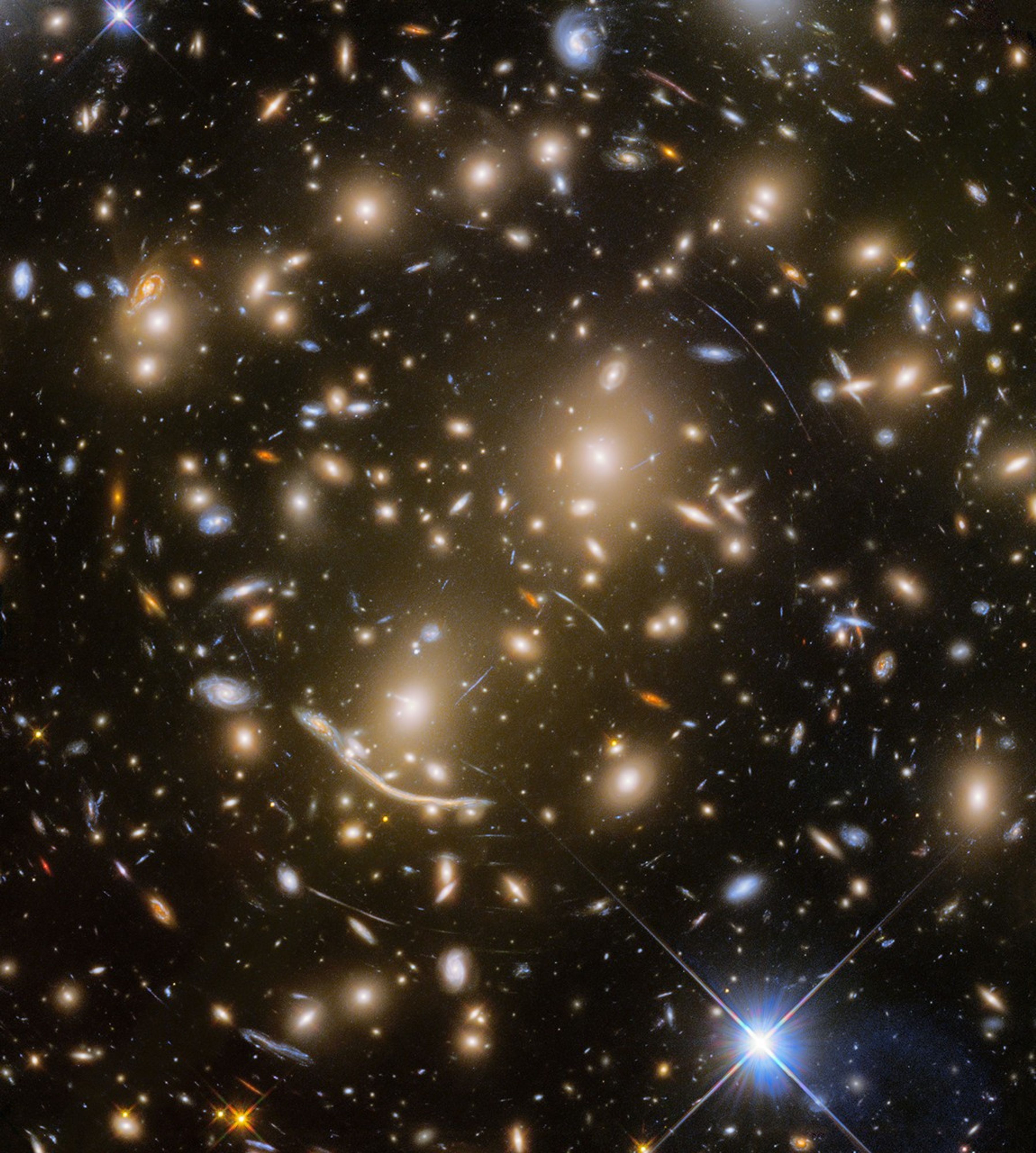
Focusing in on Gravitational Lenses
Gravitational lenses are 'Nature's Boost', expanding our view deeper into space and farther back in time.
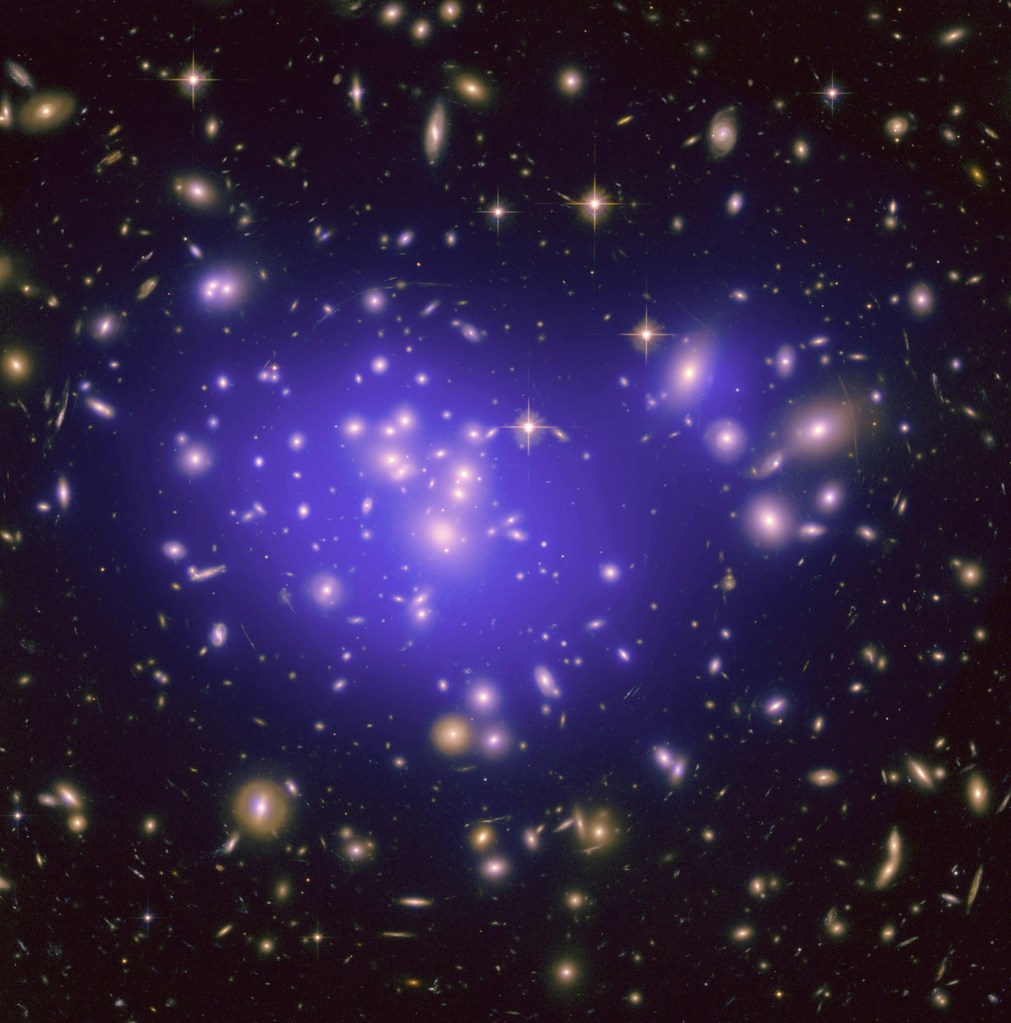
Shining a Light on Dark Matter
The gravitational pull of dark matter guides the formation of everything we can see in the universe.

Mapping the Cosmic Web
Filaments and sheets of matter create an interconnected web that forms the large-scale structure of the universe.

























